
Jun 07 2022 Grandchildren as Inventors: Creating a Maker Space
Maker Spaces are popping up everywhere — in schools, children’s museums, local malls. These are playgrounds of artistic creativity, places where supplies are available to help artists plan and build the creations of their imaginations. I appreciate Diana Rendina’s definition: A makerspace is a place where people can gather to create, invent, tinker, explore, and discover using a variety of available tools and materials.
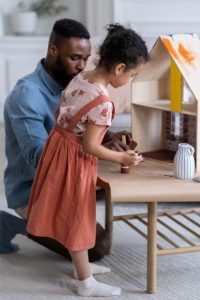
Creativity (yetzirah) is a Jewish value. When we speak in our prayers about the wonder of creation, we not only praise God’s natural world, but we also celebrate our ability to be partners with God in the ongoing work of creation, adding our own perspectives and ideas to the world.
Cartoonist Bob Mankoff says, “Jewish creativity comes from a number of things: curiosity, a love of learning, and a love of argument.” These attributes can help us raise independent thinkers who are ready to engage in tikkun olam, repairing the world. When we value the creations of children, we show them that their ideas matter and that they have the capacity to impact the world through their actions.
You can open up a wonderful way to connect creatively with your grandchild by designating a space in your home to explore creativity. A mini-maker-space can bolster your grandchild’s (and your) creative expression, provide a safe place to explore and tinker, and build skills for engineering and critical thinking. “When we allow young children to have these creative, open-ended makerspace experiences,” writes Marissa Calderón, “We are enabling them to develop foundational skills for future careers in hardware or software architecting and development, engineering, coding and so many other tech fields!”
How can you create a mini-maker space to inspire creativity and play?
1. Choose materials wisely.
Your maker space should include materials that are safe and accessible for your grandchildren with minimal supervision. Younger kiddos can use crayons or washable markers, painter’s tape, pieces of cardboard, and paper. As children develop their skills and their responsibility, you can introduce glue, scissors, paint, string or twine, and other materials into the mix. Keep more sophisticated materials (wires, glue gun, cutting tools) secured nearby to be used with adult supervision.
Recycled materials that are clean and dry are excellent inspiration for creativity. Shoe boxes and cardboard tubes — the sturdier the better — can become a car, rocket, or pirate ship. The name of the game is variety. It’s better to have a few boxes and tubes of different sizes rather than a bag of 100 toilet paper rolls.
Scraps of paper and ribbon left over from gift wrapping make great collage supplies. I bought a package of painter’s tape that included all the colors of the rainbow. It’s easy for kids to pull and tear and adds some great color to projects.
Try to avoid art supplies that limit creativity such as coloring books, themed stickers, paint-by-number, and just-add-water activity pads.
2. Store materials so they are easily accessible.
To store materials, I like to use a small rolling cart or set of drawers that you can take out or put away as needed. This keeps everything together while letting you control when they are used.
An old plastic cup works well to store markers, and I have a small bin to hold kid-sized scissors and tape. I like to store cardboard nested together. Odds and ends like buttons, pom poms, wiggly eyes, and small toys can be kept in clear bins to spark imagination.
It’s helpful to have a large box top, baking sheet, or serving tray so your grandchild can explore the items without their rolling away. This also makes for easier clean up. You can also keep a large mat or tablecloth in the maker space for children to easily access when they know they’ll be doing something messy.
3. Be conscious of purposefully using vs. wasting.
Jewish environmentalism has its source in the story of creation. Genesis 2:15 says that the task of humanity is to care for and protect the earth (“to till and to tend”). The Jewish value Bal Tashchit (do not waste) has its origins in Deuteronomy 20:19-20 which prohibits the cutting down of trees during war time. To use our resources wisely, we can make sure to use materials for a purpose.
Children often find it hard to recognize the difference between purposefully using and wasting. For example, I’ve seen a seven-year-old use half a roll of scotch tape to make a paper car. Talk to your grandchild about having a plan for their project (perhaps sketch it out on paper first), using only what is needed, and using recycled materials when they are available. You can also cut down on waste by helping strategically with tasks such as ripping tape and by pre-cutting paper into smaller pieces. In our family, we embrace the mantra, “Use what you need, nothing more.”
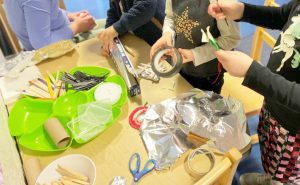
A great resource for learning about environmentally friendly creativity is from Kibbutz Lotan. Their Eco-Kef (Eco-Fun) Center includes a natural playground and solar tea house. Check out the pictures with your grandchild and imagine how you could make your own Eco-fun. For example, you can brew your own solar tea with supplies as simple as a mason jar, mint leaves, and water. You can find instructions for building a pizza-box solar oven here and use it to make nachos or S’mores using the power of the sun.
4. Inspire creativity.
The best part of a maker space is the amazing creations that come out of it. Sometimes, though, it can be hard to get that spark of creativity. To inspire your grandchild, you might ask them to create something specific:
- Tonight we’re having a chicken-and-corn barbecue. Can you create a centerpiece for the dinner table?
- What can we put in the bathroom to remind us to turn off the lights?
- Let’s build a vehicle for these Lego people who need to get to Mars.
- Can you turn this empty box top into a game we can play together?
For older grandchildren, guiding questions can help them hone in on the inventions of their imagination.
- What is a problem that you see in the world? What is one invention that could help us fix that problem?
- What is something that is easy for grownups but hard for kids? What could you create to make it easier for kids?
Another way to find inspiration is to look to other artists. Invite your grandchild to seek out the work of collage artist and creative instigator Hanoch Piven, who uses found objects to create portraits that tell a story.
![]() Click HERE to see how you can make a family portrait with Hanoch Piven.
Click HERE to see how you can make a family portrait with Hanoch Piven.
Do you have a whole gaggle of grandchildren coming at the same time?
- Fill paper bags with materials for each one (or for teams of two). Challenge the kids to create something using all of the supplies in the bag.
- Ask younger grandchildren to create components of a larger piece. For example, if you’re creating a robot, one can work on the legs, one on the body, and one on the head (or whatever form their robot takes!).
- Motivate older grandchildren, who are often inspired by competition, with small prizes, awards, or accolades for the largest, most colorful, or most inventive creations.
There is no age limit on creativity!
5. Build a maker space library.
Here are a few favorite books that can explore creativity — and welcome mistakes — in your maker space:
Beautiful Oops!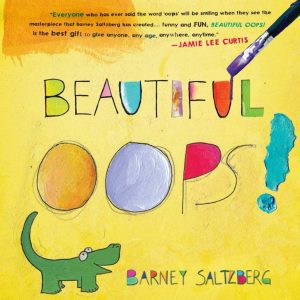 by Barney Saltzberg (ages 2–6) should be on every child’s shelf. This board book is a well-crafted exploration of the beauty that can be found in mistakes — rips, smudges, stains or holes. “When you think you have made a mistake,” writes Saltzberg, “think of it as an opportunity to make something beautiful.”
by Barney Saltzberg (ages 2–6) should be on every child’s shelf. This board book is a well-crafted exploration of the beauty that can be found in mistakes — rips, smudges, stains or holes. “When you think you have made a mistake,” writes Saltzberg, “think of it as an opportunity to make something beautiful.”
The Dot by Peter H. Reynolds (ages 4–7) will spark anyone’s creative imagination. Vashti (no relation to the queen) is stuck in art class with nothing on her paper. Her brilliant teacher invites her to begin with just a dot, and from there the possibilities are endless.
Izzy the Whiz and the Passover McClean by Yael Mermelstein, illustrated by Carrie Hartman (ages 3–6), is an excellent Jewish book for your budding engineer. Izzy creates the perfect (maybe too perfect) Passover robot to help get ready for the upcoming holiday. What kind of machine would your grandchild create to get ready for the next Jewish holiday? (Note: Shabbat is always coming, even if other holidays are far off.)
Too often I meet adults who are reluctant to create art because they don’t consider themselves artists. One of the beautiful things about exploring in a maker space is how easy it is to see the value of the process over the product. Prototypes, tests, and mistakes are all part of creativity so there is no need for perfection. Experiment and explore alongside your grandchild and show them how much fun it can be to embrace creativity together.
Rabbi Emily Meyer is the creator of Doodly Jew, a project designed to spark creativity in Hebrew learning. She believes in the power of art to create meaningful engagement with Jewish tradition. She lives in Pittsburgh, PA with her husband, Rabbi Aaron Meyer, their two children and a pet poodle.
Photographic Credits
Adult and child building a house courtesy of Pexels
Other photographs by Emily Meyer

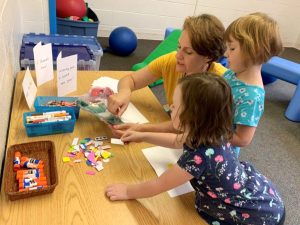
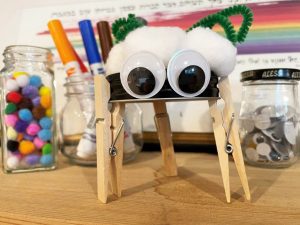


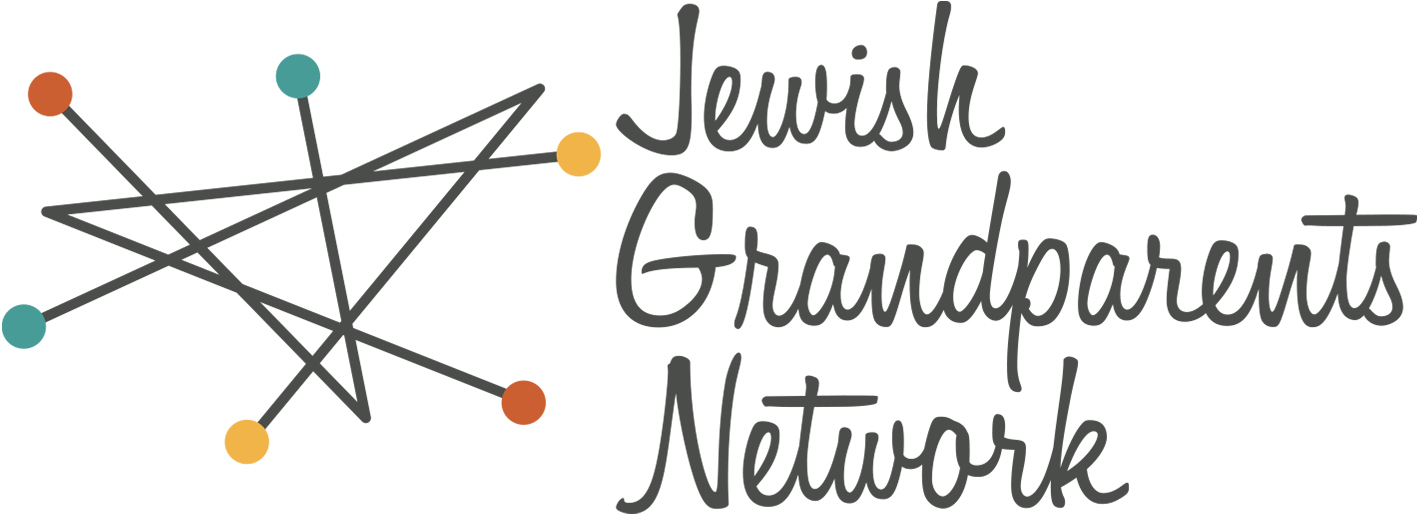
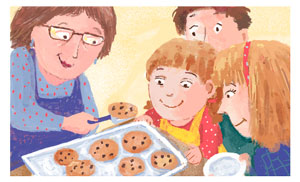 We use technologies like cookies to remember your preferences. Consenting to these technologies will provide you with a better browsing experience. JGN never shares information about your use of our website.
We use technologies like cookies to remember your preferences. Consenting to these technologies will provide you with a better browsing experience. JGN never shares information about your use of our website.